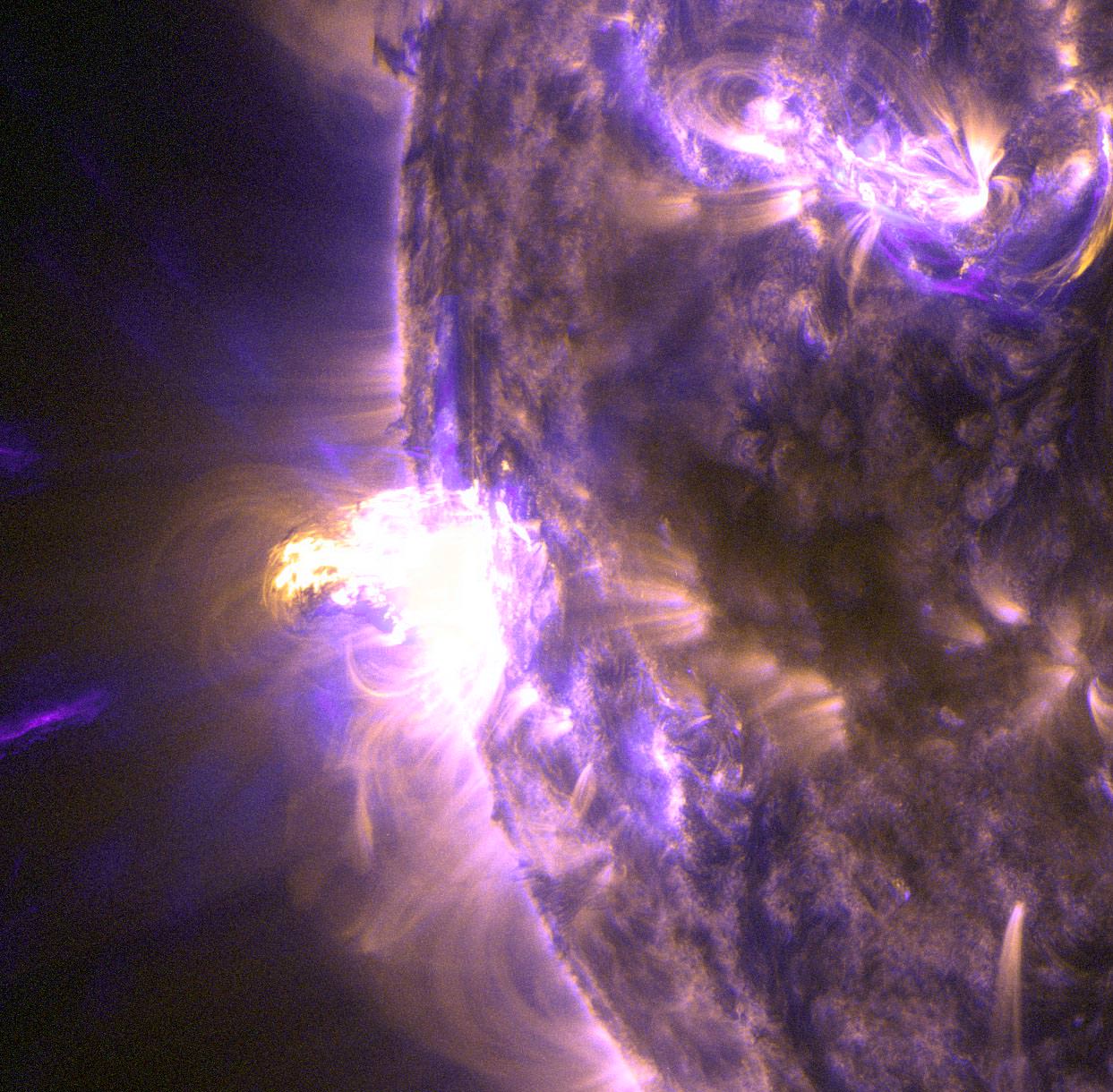While this solar peak has been weaker than usual, from time to time we get a moderate punch from the Sun. Here’s an example — what NASA calls a “mid-level” solar flare blasting off the Sun at 8:16 a.m. EDT (1:16 p.m. UTC) yesterday (Aug. 26).
While the related coronal mass ejection can cause auroras high in Earth’s atmosphere and (in more severe cases) cause telecommunications disruptions, in this case the U.S. government isn’t expecting much.
“Given the location of this event, the associated coronal mass ejection is well off the Sun-Earth line and no significant geomagnetic storming is anticipated as a result,” wrote the National Weather Service’s Space Weather Prediction Center in an update today.
NASA says the flare, which was captured by the Solar Dynamics Observatory, is an M5 flare. X-class flares are about 10 times more powerful than M-class ones.
An unrelated solar event recently caused auroras that astronauts spotted from the International Space Station.

